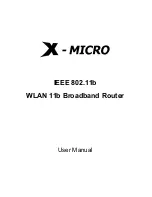
NetMail/3000 Menu Interface
Users Guide
2-3
To provide uniformity, standard office memos usually begin with headings something like
you see on this memo. Though most people don’t begin personal letters like this, businesses often
adapt these headings to aid in filing the messages for future reference, and to allow quick and
accurate scanning of the messages to determine their priority. Corporate memos typically range
from trivial informational messages to high-priority messages demanding immediate action or
response.
To provide the maximum flexibility in both business and personal use, electronic mail sys-
tems (in particular the standard which NetMail/3000 adheres to) enforce a standard set of head-
ings on all messages. These headings are part of the actual message (in fact, they are always at the
beginning of the message) as opposed to the envelope information.
Though you don’t have to be too concerned with all the items that appear in message head-
ings, be aware that they will be generated for all messages, and that they provide you with impor-
tant information. Heading information includes the date and time the message was sent, the date
and time it was received by your computer, the person that sent the message, and where they sent
it from (their return address). Optionally, the heading may also contain the subject of the message,
a complete list of who was sent the message, an identifying number for the message, what the
message is replying to, as well as many other possible items.
Before you begin, there are a few basic ideas you should understand about NetMail/3000,
which will hopefully help you understand why NetMail/3000 does certain things the way it does,
and should help you use the system more efficiently and effectively.
Whenever you run NetMail/3000, a header is printed across the top of your screen describ-
ing the version of NetMail/3000 that is running, and also what your NetMail/3000 electronic mail
address is. This address appears in the upper right of your screen, and typically has a name, fol-
lowed by an “@”, then followed by the “name” of the computer you are working on. Make note of
this name, as this is the key necessary for others to send you mail.
Note: NetMail/3000 determines your mail address by looking up the logon you used when
signing on the computer. If you have reason to believe the mail address is not correct, see your
local mail system administrator. (This is not common, but may occur on systems where many peo-
ple use the same user and account name and the mail system administrator has not yet completely
set up mail access.)




































